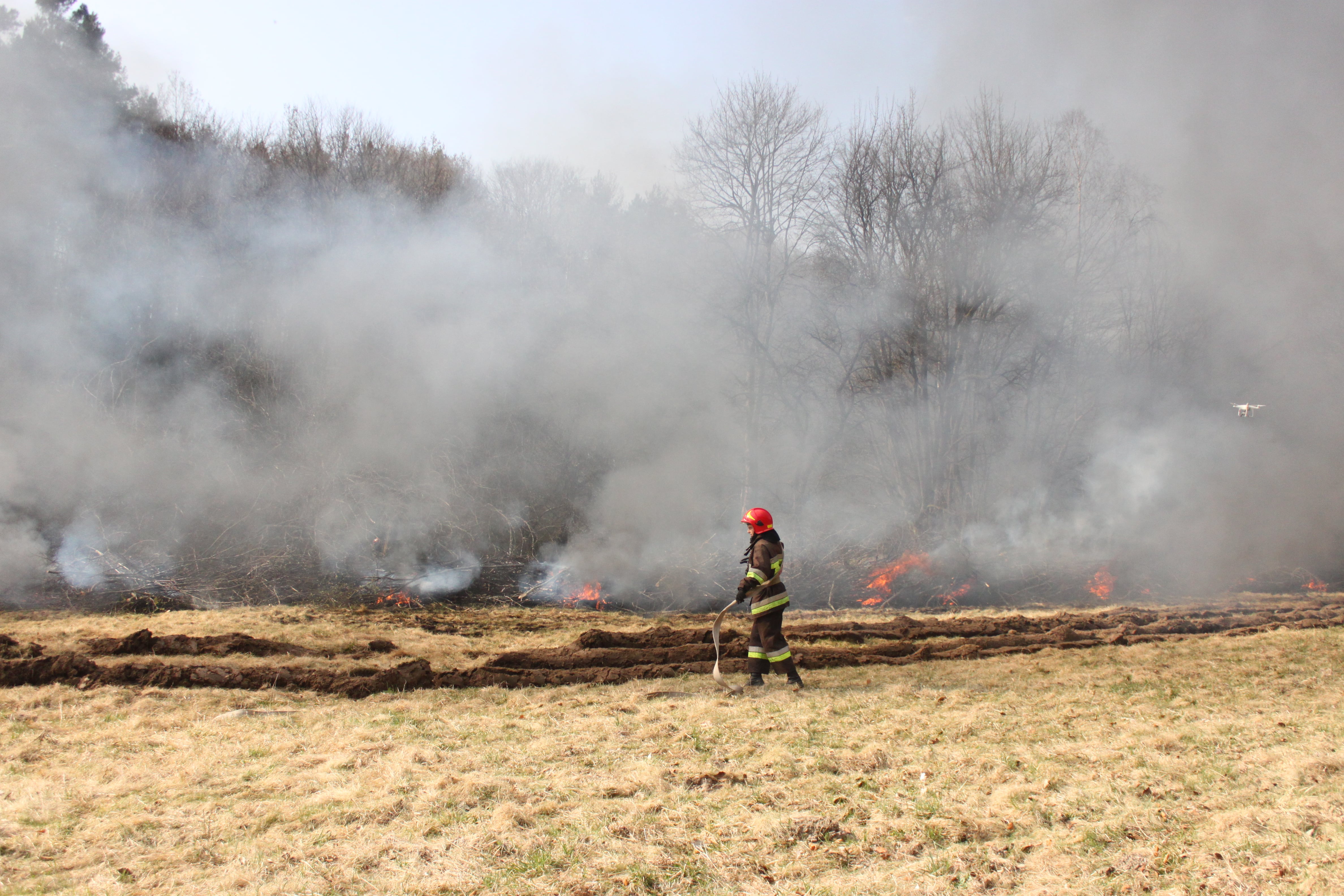Ukraine Wildland Fire Project
Project background
The U.S. Forest service has worked in partnership with NGOs, universities, government agencies, and other stakeholders in Ukraine since 2005 providing technical assistance on some of the most pressing natural resource issues facing Ukraine and ways to sustainably manage and use these resources to help move the country forward.
For twelve years, the U.S. Forest Service has cooperated with the National University of Life and Environmental Sciences of Ukraine (NULESU) (formerly the National Agriculture University of Ukraine) and the State Agency of Ukraine on Exclusion Zone Management (SAUEZM) to look at how best to manage the aging plantation forests in the Chornobyl Exclusion Zone (CEZ) and address the growing risk of wildfire in one of the most contaminated areas in the world.
For many years, fires in the zone were few in number and small, leading many to believe that wildfires were of little concern. Fire scientists from Ukraine, Europe and the US understood well that the risk of fire was growing; the question was not “if” large fires would occur, but “when”. As scientists from Ukraine, Europe and the US researched the effect of increased fuel loads from the aging and dense pine forests; the concentration of the contamination and its effect on the health of the forest; the growing number of insects and disease; the state of abandoned and decaying structures; and encroaching human activity in the exclusion zone, experts began to sound an alarm about the risk of large wildfires in the Chernobyl Exclusion Zone.
A bilateral program between the US and Ukraine was launched in September 2016. Financed by the US Embassy in Kyiv (US State Department) and the US Forest Service, the program was implemented in cooperation with the Ministry of Ecology and Natural Resources’ State Agency of Ukraine on Exclusion Zone Management, the State Emergency Services of Ukraine, the Ministry of the Interior, the US Forest Service, the Global Fire Monitoring Center (GFMC), and the Regional Eastern European Fire Monitoring Center (REEFMC). These partners worked cooperatively to reduce the duplication of resources, share expertise, ensure broader cooperation and communication, and reduce the risk of wildfires overall and exposure by local populations and firefighters from contaminated smoke.
Project duration is 17.09.2018 – 16.09.2022
Project budget is 353 680 USD
The project is financed by United States Forest Service https://www.fs.usda.gov/about-agency/international-programs
Project partners and stakeholders:
State Agency of Ukraine on Exclusion Zone Management (SAUEZM)
State Emergency Services of Ukraine (SESU)
Ministry of Ecology and Natural Resources
State Agency of Forest Resources Ukraine (SAFRU)
State Forest Enterprise “Northern Pushcha”
Chornobyl Radiation and Ecological Biosphere Reserve
Lviv University of Life Safety (LULS)
Ukrainian National Forestry University (UNFU)
University of Life and Environmental Sciences in Ukraine (NULES)
Based on significant local interest and expressed need, the U.S. Forest Service in 2018 continues the technical cooperation with emergency personnel to help build their command and response capability, as well as their basic wildland firefighting abilities, methods for using science to make basic strategic firefighting decisions and ways to conduct after-action reviews to learn from previous experiences.
The project overall goal is to reduce the risk to lives and livelihoods of people from growing frequency, intensity and rate of wildland fires in Ukraine by improving institutional, human and technical capacities of wildland firefighters.
The project objectives are to:
- enhance capacity of leaders to effectively advance the changes needed to improve systems and procedures
- improve capacity to coordinate and collaborate across agencies to respond to wildland fires
- equip firefighters with planning expertise, tactics, technologies, and equipment to suppress wildfires more strategically
- support the culture of gender inclusiveness in this historically male field.




